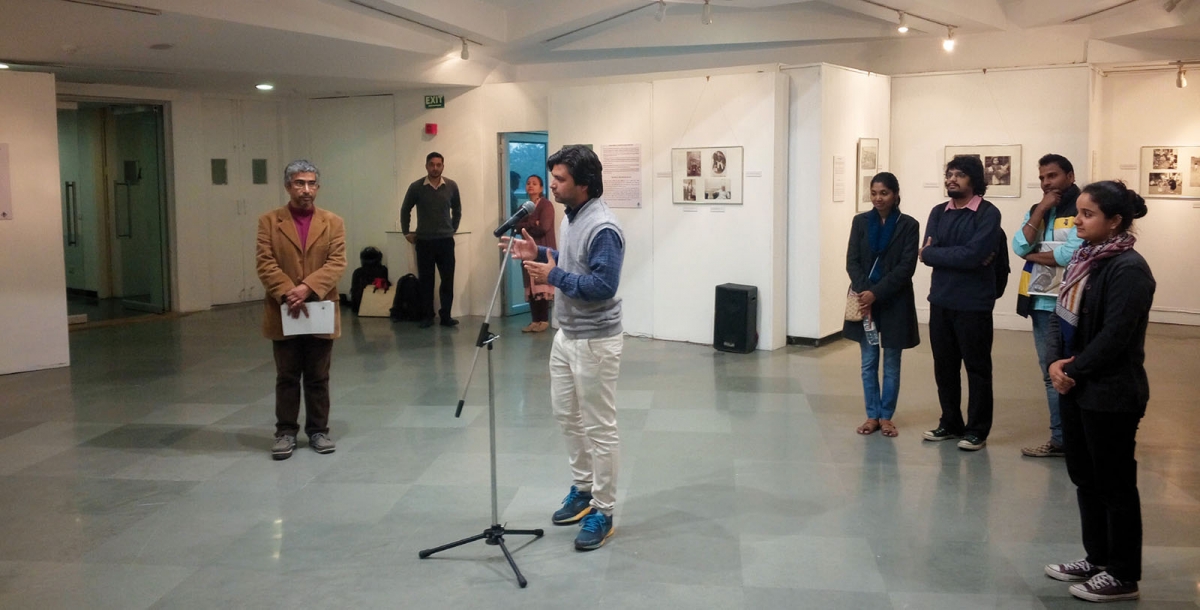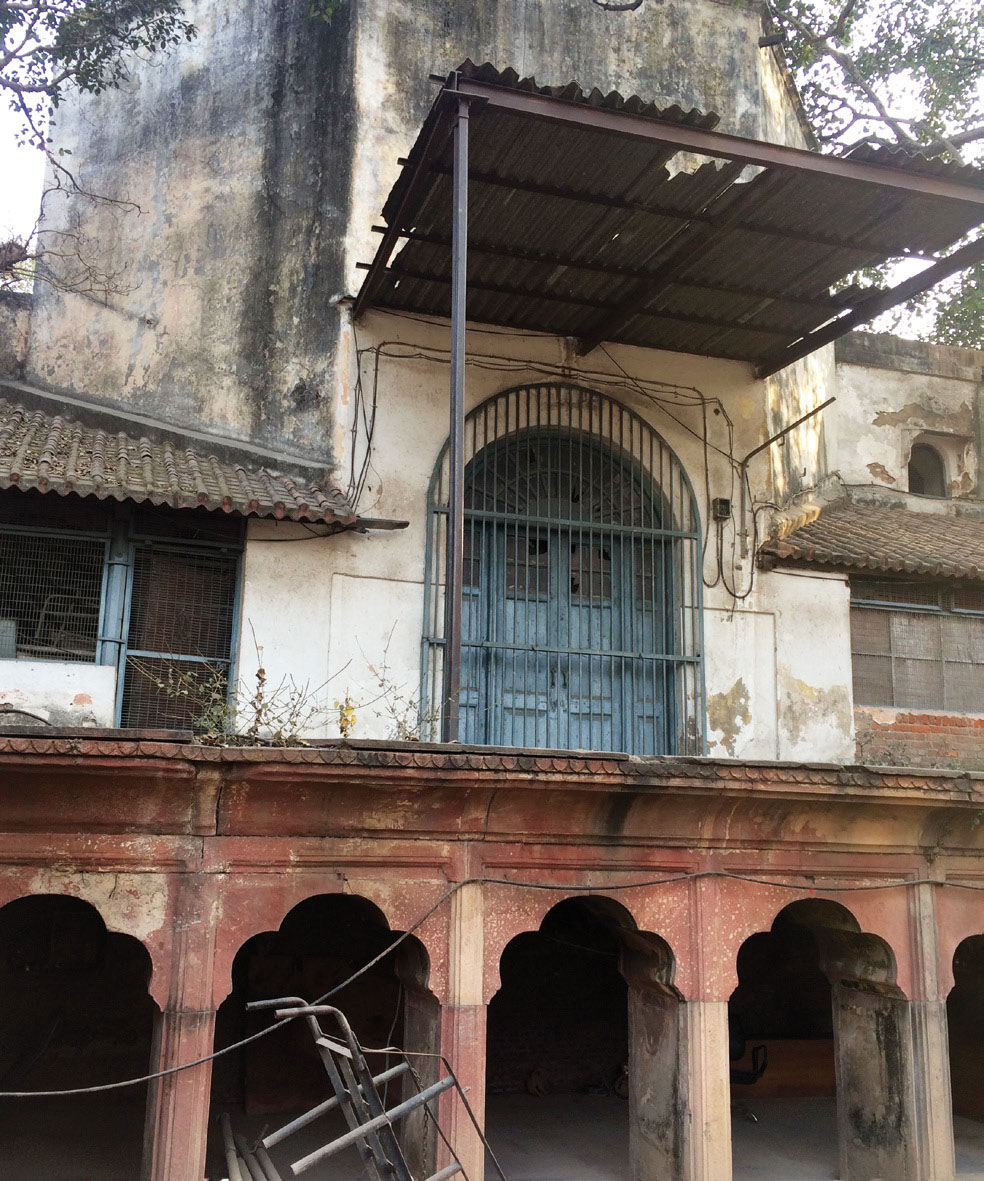The social roles of academics: reflecting on the project of a Delhi City Museum
In December 2016, UKNA (Urban Knowledge Network Asia) held a five-day event in Delhi, India, entitled Revisiting Delhi: Urban Heritage and Civic Services, combining a decentralized city-museum proposal to the local government with discussions on the sort of civic services such a museum could offer to Delhi’s inhabitants. As Chinese participants from a country in a similar situation to India, we were rather impressed by the enthusiasm of the local scholars to engage with community-based projects and wish to share our reflections.
The event was organized by UKNA partners Ambedkar University Delhi (AUD) and IIAS, in cooperation with Jawaharlal Nehru University (Institute of Advanced Study). It included a two-day roundtable on urban heritage and the need for a decentralized Delhi City Museum, and a two-day seminar on the basic urban services in Delhi and the roles of citizens, state/policy and politics.
Community-based heritage project as urban civic service
The Delhi City Museum project was initiated by the Centre for Community Knowledge (CCK) at Ambedkar University Delhi (AUD), with the goal of establishing an institutional platform in India in the interdisciplinary areas of the Social Sciences and to link academic research and teaching with dispersed work on community knowledge.1 Coordinated by Dr Surajit Sarkar, the Centre works closely together with local people to improve the understandings of their own living heritage and to integrate community-based knowledge with available alternatives. The Delhi Citizen Memory Project is one of the urban programs of the CCK that develop people-centred narratives of knowledge, history and diversity of the expanding megacity as opposed to the narrative of Delhi 'the Capital'.2 (fig.1)
We were so fortunate to be invited to the inauguration of the photo exhibition Camera Dilli – Ka – A Delhi Photo Archive 1880 – 1980, based on this project, at the International India Centre (IIC), one of top elite clubs in Delhi. (fig.2) We very much appreciated their delicate work involving students, faculty and local partners in collecting memories and interpreting the history of this amazing city. Based on their experiences of neighbourhood-based museum projects, the team decided to propose a decentralized City Museum project to the local government. This proposal aims at building a City Museum network, with numerous nodes as city interpretation centres, hosting possible permanent collections of reflections of the city, brought up through recordings of residents’ memories of Delhi.3 The museum aims to work as a civic service to collect lived experiences, organize on-site activities, interpret a multi-layered history and reinforce the local identities of this metropolis. The concept of this ‘City Museum’ cannot be generalized. It should be ritualistic to some degree, while at the same time displaying Delhi’s past, present and future. In addition, the City Museum should undertake some traditional functions of city museums as well.
Towards a City Museum: working process at the roundtable
It was the City Museum proposal that gathered us, two dozen people from urban and heritage studies, to engage in discussions at the roundtable meeting. At the roundtable there were senior professors and young lecturers working at different universities and research institutes, as well as practitioners in the field of art, museum and urban planning, including museum directors, NGO organizers, architects and urban planners. The roundtable comprised eight sessions with topics ranging from the initial idea and the definition of a City Museum of everyday lives, to the theme(s), function(s) and location(s) for a decentralized City Museum. After several presentations on different perspectives of the city of Delhi and the neighbourhood-based projects already established by CCK, we reached agreement on the general idea of a City Museum that tells the stories of diverse and unique local lives instead of the narratives of a capital city full of Indian icons. However, we were divided about some of the concrete issues, for example, the question who this museum should mainly serve or the methods by which to organize activities. Theoretically, we all agreed that it should be a multi-use museum for different people, as a place where school children are educated, tourists achieve a better understanding and appreciation of the city and where locals find their own past. Practically, however, it will be almost impossible to achieve these goals all at once, not to mention the problems presented by the poor conditions of available locations and buildings of the different museum branches.
Location was a furiously debate topic. The proposed museum is suggested to be located at different campuses of AUD to encourage people to explore different neighbourhoods across the city. However, the choice of the hub building is difficult to make. The first proposed location, the centuries-old historic Dara Shukoh’s Library building located at the Kashmere Gate Campus of the university (fig. 3), was rejected as it is poorly-equipped, half-abandoned and not large enough to qualify. We considered searching for funds to restore the building and re-use the space, but had to agree that the current condition and colonial style is too depressing for a truly vitalizing proposal for a City Museum that tells the stories of the city and its inhabitants. After all, city heritages are shared memories of the city and the people who live(d) in it. The target of the City Museum is to stimulate the vitality of the city and raise the level of education for all, displaying at the same time Delhi’s centuries-old history and profound culture. Indeed, the relationship between city museums and city heritages needs to be further discussed.
Here we see the dilemma of the proposal. We need to persuade the government to fund this museum project, coming up with an attractive proposal that both suits our goals and the goals set by the government for city development. Therefore, the layout of the City Museum needs to support a system of urban public spaces and urban services, while at the same time incorporating the regional characteristics, elements and symbols of the city of Delhi. We were careful to avoid the idea that the project is about a ‘museum of the city’, presenting the whole of the city as a living museum. Yet the concept of a museum may still be misunderstood by the government as a representation of a ‘frozen heritage’ without development. Designing our proposal, we thus made our decisions with careful consideration of political issues while upholding our initial determinations.
The social roles of academics in Social Sciences
Academics share social responsibilities just as other social actors. Many of the participants in the discussion on the City Museum proposal are academic in the fields of the Social Sciences, including the authors. Dealing with social issues, academics in the Social Sciences tend to be more involved with practical work in society than those working in other fields. CCK is a good example. The faculty doesn’t merely teach and conduct research, but also organizes quite a lot of impressing practical projects in various city neighbourhoods. They don’t consider themselves ‘authorities’, but work as facilitators, trying their best to achieve agreement among different social groups. At the same time, the City Museum project requires cooperation with academics from other fields, such as, for example, from landscape architects, who can help to deal with the relationship between the City Museum and its surroundings. Moreover, the involved academics have to work closely with governmental agencies. In China, the current strategy of think tanks requires scholars to actively participate in policy-making consultation for better governance, corresponding to Confucian thought that all intellectuals should contribute their intelligence to the country. Based on experiences of practical projects linking different stakeholders, academics could provide valuable suggestions to facilitate community-orientated policies, which may be taken as opportunities to promote democracy in a roundabout way. The essence is to abide by our professional ethics while negotiating with governmental agencies and working for the benefit of the public, just as the people of CCK have been doing in this City Museum proposal and other projects in the fantastic city of Delhi.
Xiaomei ZHAO, Lecturer at Fudan University; UKNA fellow at IIAS from February-July 2015. Her research interests include heritage studies, conservation of built heritage, vernacular architecture and rural settlements, as well as architectural history (zhaoxiaomei@fudan.edu.cn).
Yike Hu, Associate Professor at Tianjin University, School of Architecture; UKNA fellow at IIAS from April- September 2015. His research interests include landscape architecture design, urban public space design, as well as scenic tourist area planning and design (563537280@qq.com).


